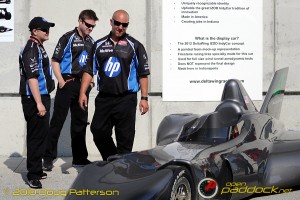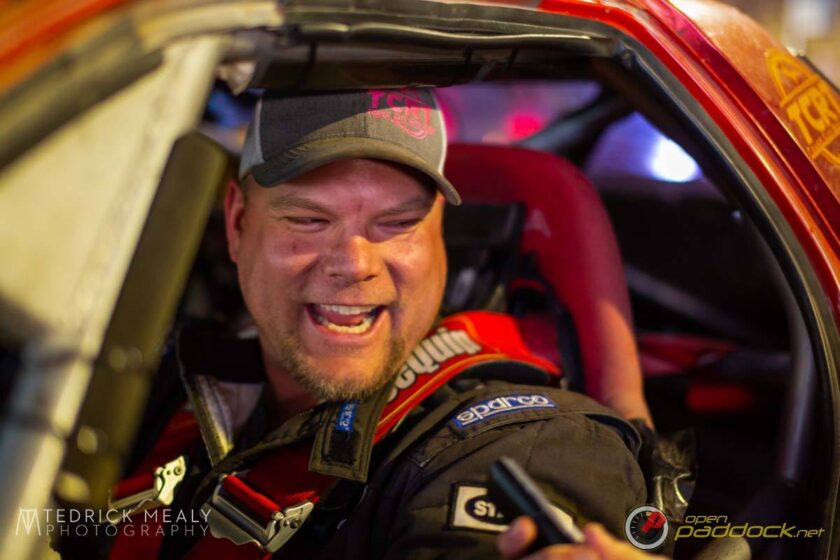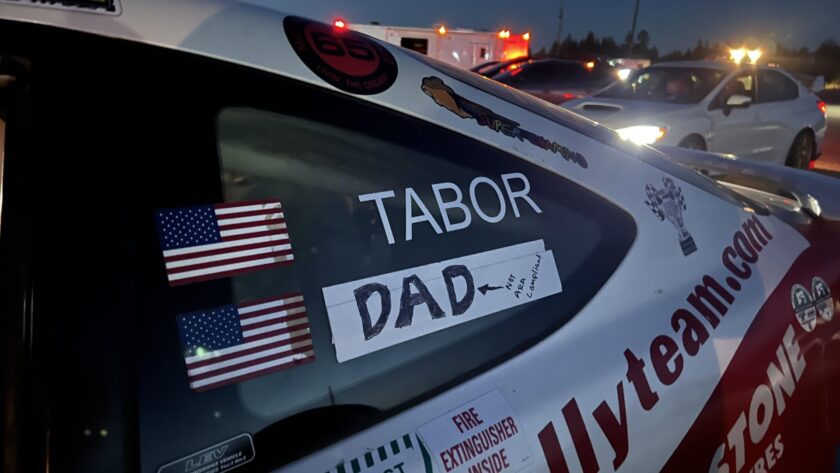I think most of us here at OpenPaddock share the same opinion regarding the Delta Wing concept that was proposed by a group of team owners lead by Chip Ganassi. Its a hideously ugly car, but the engineering philosophy behind it is brilliant. While I’m happy that it was not selected as the direction for the 2012 IndyCar chassis, not that I’m entirely please with the direction that was selected, I would be very interested in seeing this experiment in automotive engineering actually make it to the track so that the ideas and designs of Ben Bowlby and his team of clever engineers and aerodynamicists can put their concepts to the test. Rumor has it, that this may actually happen! Motorsports Magazine’s Gordon Kirby in his article The Delta Wing lives! revealed that the efforts to build and test a Delta Wing prototype are in high gear. By the end of the month, the Delta Wing Racing group hopes to have a fabrication team together and begin construction of a fully-functional race car that they can take to the track and test. Their hopes are to find a sanctioning body and run a separate Delta Wing series in 2013.
 So what do you think? Would you buy a ticket? I have to admit that I’m very intrigued by the prospect of the Delta Wing actually circulating a real race course. There are a lot of very interesting engineering concepts that I’d like to see put to the test. Chief amongst them is the torque-vectoring steering assist that the concept models promised. The increasing interest in the Global Racing Engine (GRE) also bodes well for the Delta Wing platform and would allow multiple manufacturers and small engine shops to become involved if a new series does emerge. Cool engineering, multiple engines, what’s not to like? Oh, yeah, the car looks completely goofy. The more I think about it though, the less concerned I am about the looks. If it’s racy, I’ll watch it.
So what do you think? Would you buy a ticket? I have to admit that I’m very intrigued by the prospect of the Delta Wing actually circulating a real race course. There are a lot of very interesting engineering concepts that I’d like to see put to the test. Chief amongst them is the torque-vectoring steering assist that the concept models promised. The increasing interest in the Global Racing Engine (GRE) also bodes well for the Delta Wing platform and would allow multiple manufacturers and small engine shops to become involved if a new series does emerge. Cool engineering, multiple engines, what’s not to like? Oh, yeah, the car looks completely goofy. The more I think about it though, the less concerned I am about the looks. If it’s racy, I’ll watch it.
The big concern for a lot of us open-wheel fans is how this will affect the finally reunified sport of IndyCar racing. There’s been a lot of harsh words thrown about in the paddock and media lately by some of the owners regarding the decision of the ICONIC committee regarding the new 2012 chassis parameters. As Tony Cotman is just beginning the process of detailing the technical regulations, I still see these comments as political posturing. Some of the teams may be trying to leverage additional concessions and cost reductions from the league, just as they received in 2008. If the Delta Wing group is successful in their initial tests, and they find a sanctioning body for a new Delta Wing racing series, we very well could see an exodus of teams from IndyCar racing. I don’t think you’ll see the larger teams such as Penske, Ganassi, and Andretti leave, although they may participate in both, but teams such as Dale Coyne Racing, Conquest Racing, and even Panther may decide that they’ll see better results on track and better return on investment in a new series. I’m not saying that we’d see the Split 3.0, but we might see a slight splintering of the sport. Given the great forward momentum the league has right now, this wouldn’t be a death blow by any stretch, but it would certainly be a distraction and a dilution of the already difficult sponsorship market.
What do you think? Would you like to see it? Is it a threat to open-wheel racing in America, or a side-show curiosity?




I think much of the team posturing has come from rumors about cutbacks or an outright demise of the TEAM program where each full time participant is guaranteed 1.24 million USD in lieu of any real purse at races.
That said, the tone taken by the DW proponents in Kirby’s article indicate sour grapes. Delta Wing was not chosen for several reasons, but chief among them is that they were a startup company with on over the top, untried concept with no funding or intentions to actually build a prototype of their radical concept to prove that it could turn a lap.
Further, with no manufacturing capabilities or expertise, I am inclined to consider their pricing figures as very optimistic.
I was and still am a proponent of the Delta Wing, but I think IICS made the right decision.
The Delta Wing petentially will be a death trap. They’re building a car that is supposed to go faster yet discard decades of saftey development. It could be a disaster!. How will this car behave in an accident? What happens when it gets sideways? Well, the back end hits the wall and the narrower front whips around and smacks the wall. The car could break in two. What happens from a side impact, mainly a T-bone. With no side pod protection,,,, driver is dead.
Has anyone seen a Delta Wing saftey cell or tub? Does one even exist? Do people realize this design was made many years ago to run the salt flats? It was not made to run in a closed corse. I don’t care how well it performs, it will take the lives of drivers because it won’t be safe. Evolutionary development has kept the cumaltive knowledge of saftey on board. Delta Wing potentially sets it back who knows how many years by throwing most, if not all of it away.
A new series based on this contraption? Not likely
The “big concern” was evident when the Delta Wing introduced their own CEO and marketing director many months ago. This was never about the simple submission of a vehicle design for approval by the IRL.
Strategies for regulations and oversight, formation of a coalition of team owners, and the creation of a public platform through enlistment of members from the motorsports press were all components of the Delta Wing concept. Had an actual race car been revealed in Chicago, the open wheel landscape would look very different today.
Questions currently being raised by unnamed owners about the IRL strategies are far behind the curve. So are questions about whether a Delta Wing Series is an attractive prospect or not. The bottom line that such a division of resources, and even a division of perception about the future of open wheel racing, is not possible in the current market.
In my view, this was always an “all or nothing” debate. Had the concept vehicle been presented as a viable new race car, there would be more than a few disaffected owners and diehard supporters still contemplating the prospects of its creation. That makes the Delta wing a non-starter to me, regardless of my personal taste or factual questions about the vehicle design and performance. The motorsports pie is not growing, and there is not enough of it to share.
Mike M, your concern about safety WELL founded. Bowlby did address this concern in some interviews, and I trust that he’s confident in the safety of the vehicle. Nonetheless, I wouldn’t want to see these cars on track until they’ve done extensive crash and safety testing. The t-bone scenario is of course the scariest in any car. I think back to Sonoma last year and still cringe. The safety of the current design of open-wheel tubs is incredible, but its also too prone to becoming airborne. The philosophy behind the DW is that the entire long nose of the car is all crash structure, so that in a t-bone incident, the impact is absorbed by the nose of the impacting car with the sidewall of the impacted car being as rigid as possible. Its an interesting concept, but one that I was to be exhaustively tested before a driver ever sits in the thing.
Andy, you’re spot on regarding why the DW wasn’t chosen to be the next IndyCar. It COULDN’T be. We’re no longer in the “run what you brung” era for the Indianapolis 500 Mile Race. If we were, then this car might be welcomed as a competitor even while being snickered at by most in the paddock. Isn’t this what they did to the Clark’s rear-engine Lotus when it first arrived? …until it started kicking everyone’s butt. This is the wrong time in the history of IndyCar racing to attempt the introduction of such a revolutionary concept.